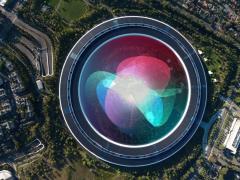In the realm of augmented and virtual reality (AR/VR), last week's Consumer Electronics Show (CES) was abuzz with new product unveilings. Despite XR technologies (encompassing augmented, mixed, and virtual reality) being in their nascent phase, hardware developers are steadily driving towards widespread acceptance among businesses and individual consumers. CES showcased this progression, revealing an array of new mixed-reality headsets, smartglasses, and a potent Qualcomm processor, setting the stage for a fresh wave of devices later in the year.
Tuong Nguyen, a Gartner analyst, believes such announcements are pivotal in fueling market growth and the innovation necessary for establishing a robust ecosystem, thereby propelling industry evolution and wider adoption. Recent shifts in sentiment towards the metaverse and related technologies, particularly after Apple's Vision Pro revelation last summer, have rekindled public interest. Products like Meta's Quest 3 headset and Ray-Ban's smartglasses have received favorable reviews, further reigniting this interest.
Despite a challenging 2023, where device shipments dipped by 8.3% to 8.1 million units, IDC analysts are optimistic about a significant sales resurgence in 2024, predicting a 46% increase from the previous year. Nguyen cautions, however, that achieving mainstream adoption is still a distant goal, with current VR and AR headset adoption in the low single-digit percentage. Overcoming hardware limitations is just part of the challenge; a robust ecosystem of content, services, and applications is equally crucial for progress.
Yet, there's a silver lining, as Nguyen points out. The latest devices are poised to spark interest and innovation across the ecosystem, contributing to the industry's overall evolution. Interestingly, the most prominent AR/VR announcements at CES weren't confined to the event itself. Apple's revelation of the Vision Pro's US release date made waves, yet release dates for other countries remain unannounced. Apple's market validation is seen as a major influencer, drawing competitors and other ecosystem players, essential for the success of AR and VR head-mounted displays (HMDs).
Despite its steep $3,499 price tag, the Vision Pro is not expected to target the mass market initially. IDC analysts anticipate sales of about 200,000 units in its first year, primarily to business clientele. Meanwhile, Apple's foray into spatial computing, or mixed reality technology, is expected to spur broader consumer interest in the field.
Other notable developments include Sony's shift from VR gaming to business applications, announcing an unnamed mixed-reality device at CES, aimed at 3D content creation and professional collaboration. This device, featuring a 4K OLED display and video passthrough, marks Sony's venture into more versatile applications, moving beyond its gaming roots.
Qualcomm's latest XR chip, the Snapdragon XR2+ Gen 2, also made headlines, indicating a potential new headset launch from Samsung. While the release timeline remains uncertain, late 2024 is speculated as a probable window. The chip's advanced features suggest a new generation of high-performing mixed-reality devices on the horizon.
CES also saw the unveiling of several augmented-reality smartglasses, like Xreal's Air 2 Ultra and TCL's RayNeo X2 Lite, priced at $699. These glasses, primarily targeting developers, offer a lightweight, smartphone-tethered alternative to bulkier headsets, signifying a diverse range of products from the market's major AR headset supplier. Despite some limitations, these products mark significant strides in AR technology, promising an exciting future for the industry.







